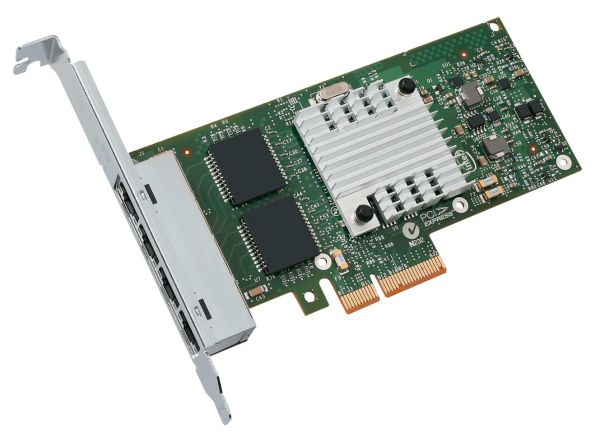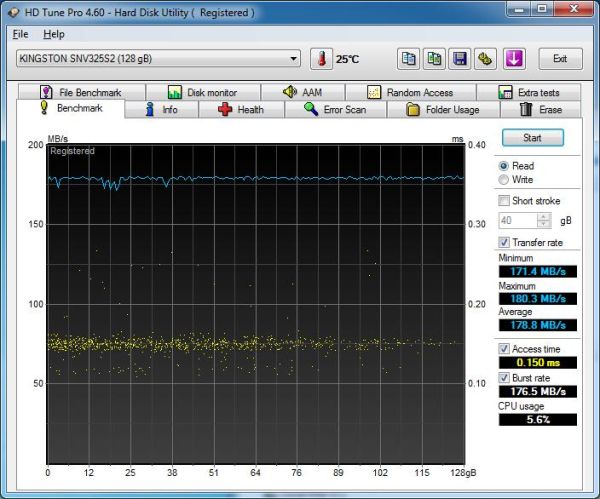LaCie 5big Storage Server NAS Review
by Ganesh T S on November 8, 2010 9:26 PM EST- Posted in
- NAS
- LaCie
- 5big
- storage server
- Windows Storage Server
For the purpose of NAS reviews, we have setup a dedicated testbed with the configuration as below. The NAS is directly connected to the testbed (using as many Cat 5E cables as there are ports on the NAS) without a switch or router inbetween. This is done in order to minimize the number of external factors which might influence the performance of the system.
| NAS Benchmarking Testbed Setup | |
| Processor | Intel i5-680 CPU - 3.60GHz, 4MB Cache |
| Motherboard | Asus P7H55D-M EVO |
| OS Hard Drive | Seagate Barracuda XT 2 TB |
| Secondary Drive | Kingston SSDNow 128GB |
| Memory | G.SKILL ECO Series 2GB (1 x 2GB) SDRAM DDR3 1333 (PC3 10666) F3-10666CL7D-4GBECO CAS 7-7-7-21 |
| PCI-E Slot | Quad-Port GbE Intel ESA-I340 |
| Optical Drives | ASUS 8X Blu-ray Drive Model BC-08B1ST |
| Case | Antec VERIS Fusion Remote Max |
| Power Supply | Antec TruePower New TP-550 550W |
| Operating System | Windows 7 Ultimate x64 |
| . | |
In addition to the Realtek GbE NIC on-board the Asus P7H55D-M EVO, four more GbE ports are enabled on the system, thanks to the Intel ESA-I340 quad port GbE ethernet server adapter . With a PCI-E x4 connector, the card was plugged into the PCI-E x16 slot on the Asus motherboard.
Two of the four ports are teamed together as shown in the video below below during the benchmarking.
Intel NASPT is used to benchmark the NAS device. In order to ensure that the hard disk transfer rate is not a bottleneck, NASPT is run from the secondary drive in the testbed (the Kingston SSD). With average read and write speeds of 178.8 MB/s and 167.8 MB/s, it is unlikely that a single GbE link NAS can be limited in performance due to the test system. However, a link aggregated NAS could be affected. Fortunately, as we will see in the next few sections, this wasn't the case for the 5big storage server.
All file copy tests were also performed using the SSD. The file copy test consists of transferring a 10.7 GB Blu-Ray folder structure between the NAS and the testbed using the robocopy command in mirror mode.
There are three important sharing protocols we investigated in the course of our evaluation of the 5big storage server. In the next few sections, you will find NASPT / robocopy benchmarking results for Samba, NFS and iSCSI sharing protocols. Each section also has a small description of how the shares were set up on the NAS. The NASPT benchmarks were run in Batch mode thrice, giving us 15 distinct data points. The average of these 15 values is recorded in the graphs presented in the following sections. The robocopy benchmark was run thrice, and the average transfer rate of the three iterations is presented alongside the NASPT benchmarks.













37 Comments
View All Comments
mkruer - Tuesday, November 9, 2010 - link
In this case this was LaCie 5big Network 2 not the one you were reviewing so from that point my comments may not be justified. however considering all the issues they seem to have with the LaCie 5big Network line up it really does not surprise me that they are ditching their quasi linux pseudo AD system for a windows based system. After my experiences the overarching question that MUST be ask is. "If something goes wrong with the OS, is there a way to get to the data bypassing the OS?" historically all LaCie products you MUST use the LaCie UI, and there is no back door if something goes wrong. if this is the case with the LaCie 5big Storage Server i would tell people to avoid it. doubly so if it is RAID'ed I was hoping that if something went worng with the unit I had I would be able to use either USB or estat to attach the device as a local storage (this would bypass the OS), but nope. All the ports on the box are if you want to extend the unit still using the flaky OS running on it.IceDread - Tuesday, November 9, 2010 - link
It looks to have a hard time competing with zfs systems. For the high price it has, why would someone want to purchase one..Sosh - Tuesday, November 9, 2010 - link
If this is supposed to be professional grade, I don't understand why they would opt for a cheap brick power supply with a Mini-DIN connector.These connectors are notoriously loose. That PS is going to be sitting on the floor in a nest of other cables and supplies. All it will take is someone to kick the cable, or pull on it while fiddling around with something else down there for it to drop power to the NAS - possibly loosing data in the process.
jabber - Tuesday, November 9, 2010 - link
I do a lot of office upgrades for small finance firms (say 3-4 people) and they want to move on from file sharing between PCs. They dont want to run a server so a NAS box is perfect for centralised file sharing and organisation.However, for them encryption is vitally important in case of theft and very few NAS boxes appear to carry decent encryption. Plus NAS reviews that do mention encryption rarely ever test it and report on it.
For business use, encryption is very important. Customers have all read the embarrassing news reports of stolen data getting into the open. They want to avoid that as much as possible.
ganeshts - Tuesday, November 9, 2010 - link
I think MS Bitlocker serves this purpose and is supported in Windows Server 2008. Can you let me know what sort of testing you would like us to do for this feature?jabber - Tuesday, November 9, 2010 - link
Bitlocker is out as most users are still on XP.
The dont want servers. So Server 2008/Bitlocker doesnt even figure in this equation.
They just want simple NAS boxes for encrypted file storage and sharing.
Set and forget, pretty much.
What we need to know is does the NAS support encryption.
If it does how does it implement it (full disk/by share/on the fly/USB key etc.)?
How does it affect file transfer/read/write performance?
Customers do not require anything too sophisticated or hard to administer. Its purely to stop anyone who steals the kit to go looking at the data stored on it.
jabber - Tuesday, November 9, 2010 - link
For info, I'm currently pushing out Seagate Blackamors to customers.They are pretty cheap and use on the fly encryption for any share you set it on. The encryption key is stored on a USB stick that has to be plugged into the back of the NAS box for the shares to work.
It's pretty simple and once setup needs little work from the end user other than removing the USB key.
Would be nice to see some alternative solutions.
ganeshts - Tuesday, November 9, 2010 - link
jabber, Thanks for your inputs.I will talk to LaCie (and any future NAS manufacturers who want us to review their units) about this. But, as you mention, Server 2008 based solutions are probably not going to work for your requirement unless there is some other specific support from the manufacturer.
Rasterman - Tuesday, November 9, 2010 - link
synology has encryptionjabber - Tuesday, November 9, 2010 - link
Yes and some of the QNAPs too. However, you usally dont get encryption on them till you are spending in the £400 range for the 4xHDD boxes.Ideally we need a RAID1 capable box with simple to administer encryption with HDDs installed for around the £200 price of the Seagates.